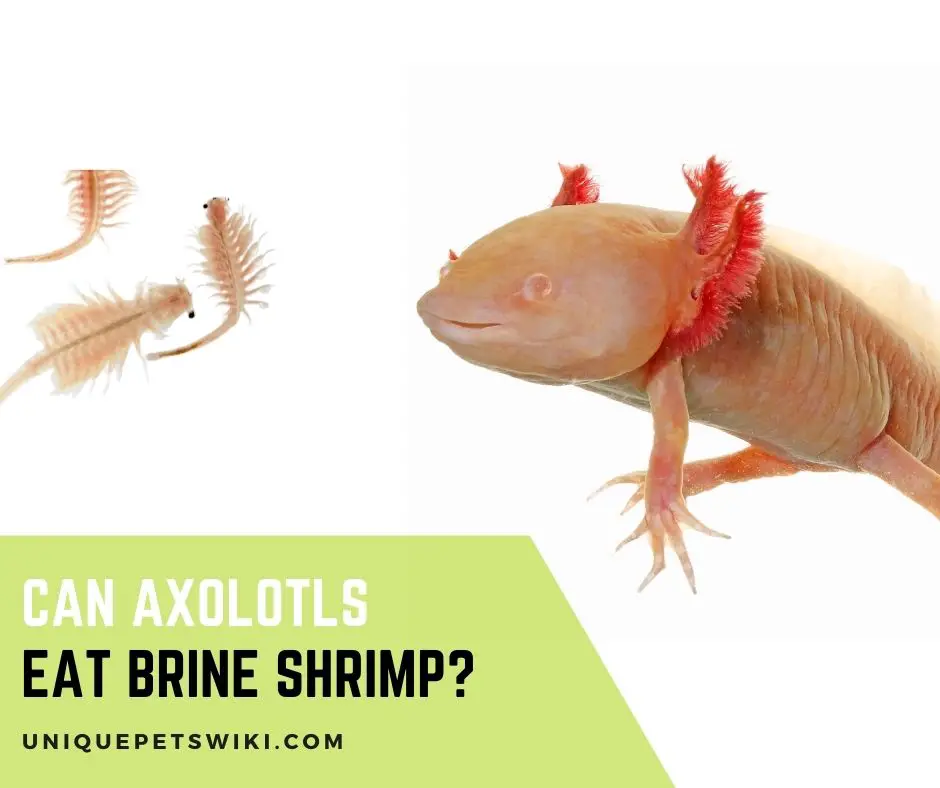Do you want to provide other food varieties for your Axolotls? How about trying brine shrimp?
Axolotls are excellent and unique aquatic creatures and are more prevalent in many households because they are worthwhile keeping.
They have specific nutritional requirements and diets which you should meet if you are eager and passionate to own some in your household.
Axolotls mainly eat meat-based foods which they can easily digest, such as insects, mollusks, small fishes, etc. But can axolotls eat brine shrimp?
Let us dig into this article as I will enlighten you and solve your puzzle about if Axolotls can eat brine shrimp and other vital information you will need to raise your axolotls successfully.
Contents
Can Axolotls Eat Brine Shrimp?
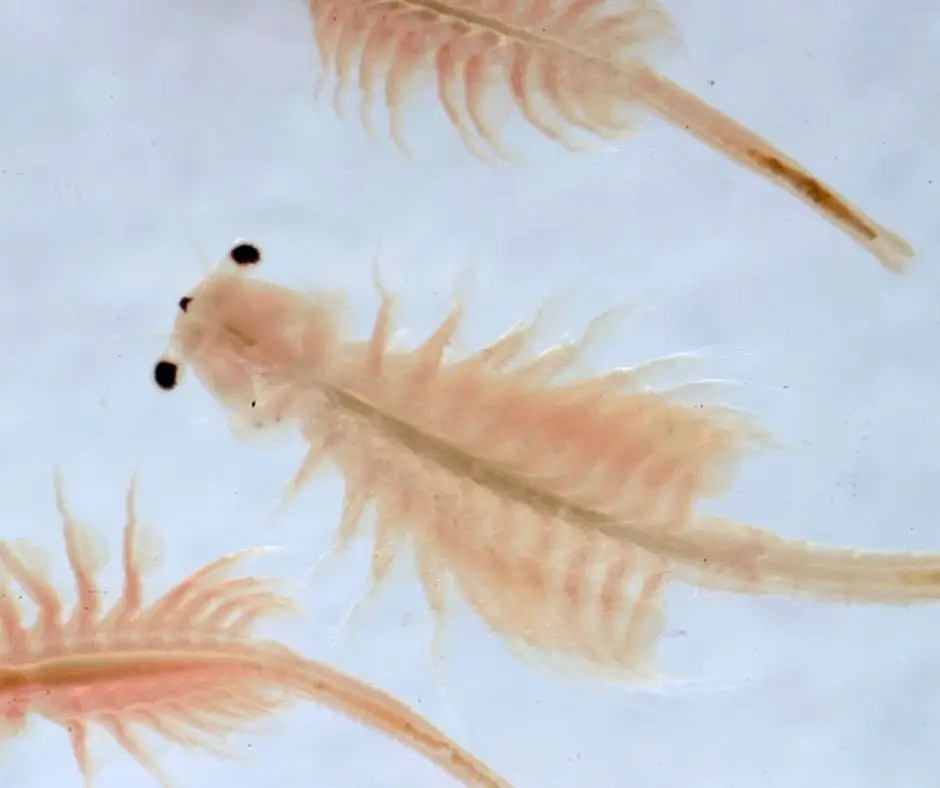
Yes, Axolotls can eat brine shrimp. Brine shrimp is very nutritious and provide lipids, fatty acids, and vitamins to your axolotls. it’s rich in proteins which makes axolotl strong, healthy, and live longer.
Even though there are varieties of shrimp suitable for axolotls, they like to eat most types of shrimp available, especially live brine shrimp.
Brine shrimp is one of the favorite types of shrimp that axolotl loves to eat so much. In addition, brine shrimp tastes very nicely; that is why axolotl loves them so much.
Pros and Cons of Brine Shrimp
There are a few things to consider before feeding your axolotl brine shrimp. While brine shrimp can be a nutritious and easy-to-find food source, there are also some potential drawbacks to consider.
Pros
- Brine shrimp is highly nutritious for axolotls; for example, it is rich in vitamins, fatty acids, lipids, and proteins suitable for the growth and development of your axolotls.
- Brine shrimp is an excellent and cheap food choice. As a new pet owner, you will not face difficulties and go the extra mile to look or buy food for your axolotl.
- Brine shrimp is easy to buy and make at home; as a result, you will not rely on pet stores for the supply of the food, which could sometimes disappoint you if they close and you’ve run out of food.
- Brine is an excellent source of food for baby axolotls. Baby axolotl eats live hatchlings from a brine shrimp egg.
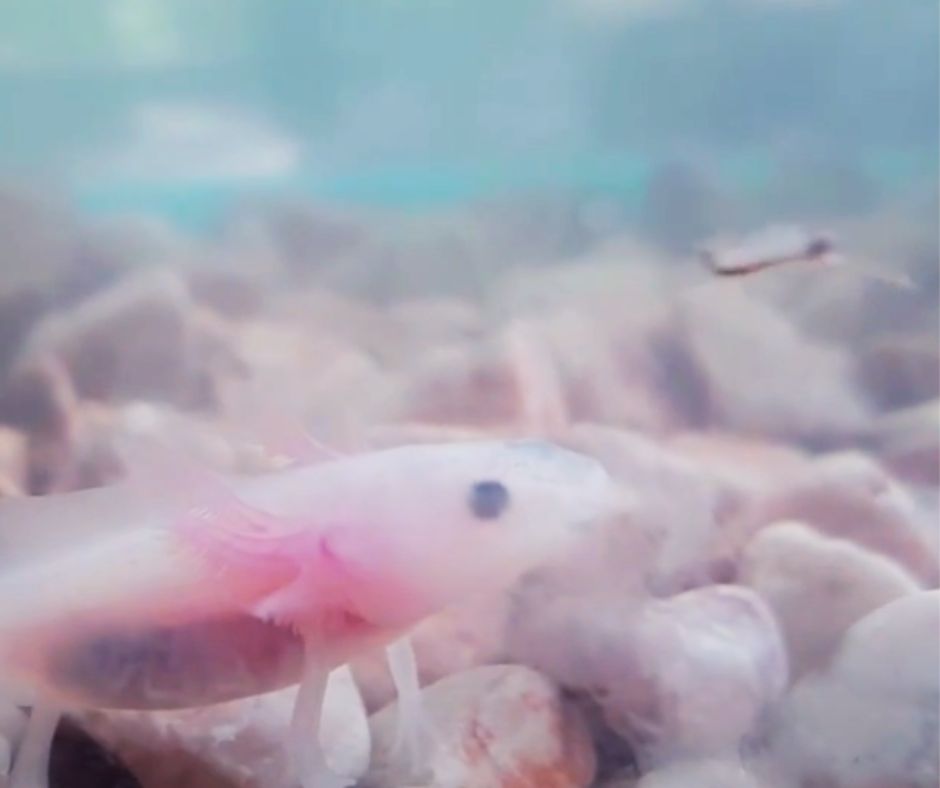
Cons
- Brine shrimp die quickly in freshwater, leaving behind diseases. They also tend to pollute the water when they die.
- Brine shrimp creates a mess in axolotl tanks. When you feed much brine shrimp to your axolotl, it will lead to the growth of unwanted plants like fungi and harbor disease-causing microorganisms in the tanks.
- Brine shrimp alters water hardness since they contain salt. As a result, it will increase the acidity and PH of the water, which will be toxic and harmful for the axolotl to survive.
- Brine shrimp requires more water changes. This is because they can die quickly and contaminate the water. That said, changing water often will demand more manpower and time to maintain the proper hygiene in the tank.
What Kind of Brine Shrimp Can You Feed Your Axolotl?
There are various kinds of brine shrimp that you can feed your axolotl: brine shrimp eggs, baby brine shrimp, live brine shrimp, frozen brine shrimp.
This will depend on the size of your axolotl, as discussed further below:
Baby axolotls eat live hatchlings from brine shrimp eggs, unlike adults who eat frozen brine shrimp.
This is because baby axolotl eats anything that wiggles in front of it. That is part of the natural response to feed themselves.
As long you provide brine shrimp eggs, the baby axolotl will eat; however, the specialist advises that it is dangerous and can be deadly for your axolotl.
The reason is that the presence of many cysts (unhatched eggs) or eggshells can choke or produce impaction in the baby axolotl and perhaps kill it.
Are you thinking of feeding baby brine shrimp (BBS)? Baby axolotl will eat live food within their vicinity, including baby brine shrimp.
Being small in size, the baby axolotl will eat baby brine shrimp (Artemia) that are 0.4mm in length.
Live brine shrimp is a thing for baby and adult axolotls. Ideally, brine shrimp is about 8 – 10 mm in length, approximately about the size of the baby axolotl itself.
Adult axolotls are fine eating such brine shrimp.
Adult axolotls can also eat frozen brine shrimp. Freezing helps you store brine shrimp without worrying they will spoil, and it’s easy to transport them.
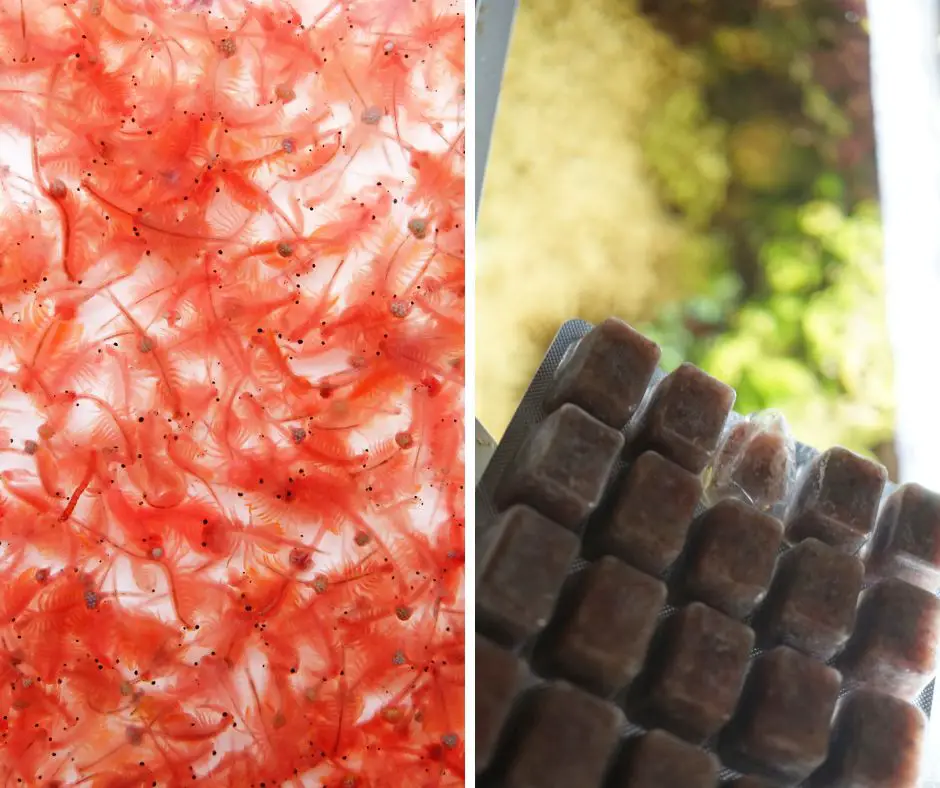
Feeding Baby Axolotls Brine Shrimp
Although axolotl can eat brine shrimp, the babies should eat baby brine shrimp because it is small for them to gulp down. Baby brine shrimp also contain many nutrients that baby axolotls need.
To feed the baby axolotls on baby brine shrimp, you must meet specific needs and optimum conditions.
It is not about what to feed but how to feed the baby axolotl as well, e.g., you may choose to feed your axolotl once per day or twice per day.
It will help avoid the dangers of overfeeding, thereby polluting and dirtying the water in the tanks. Below are in-depth procedures for preparing and feeding baby axolotl on brine shrimp:
Step 1: Prepare Baby Brine Shrimp
To avoid failures and regrets, it’s always good not to rely on pet stores for a regular supply of baby brine shrimp. A break in supply can or will probably kill your axolotls if you are not ready.
Did you know that you can hatch or home-culture brine shrimp? As a potential axolotl owner, it is acceptable to feed brine shrimp to your axolotl as a live food option rather than frozen.
Learning to hatch brine shrimps yourself is a wise decision.
The primary benefit of hatching brine shrimp at home is that the baby brine shrimps first hatch carry an egg sac full of nutrition which you should pass to your baby axis.
However, as time passes, the bbs egg sac nutritional content diminishes.
Additionally, if you buy bbs from shops, it will not be fully packed with the goodness you desire.
They may not have been hatched recently, and some shrimps may be too big for your baby axis to gulp down.
Step 2: Drop Baby Brine Shrimp Directly into The Tank
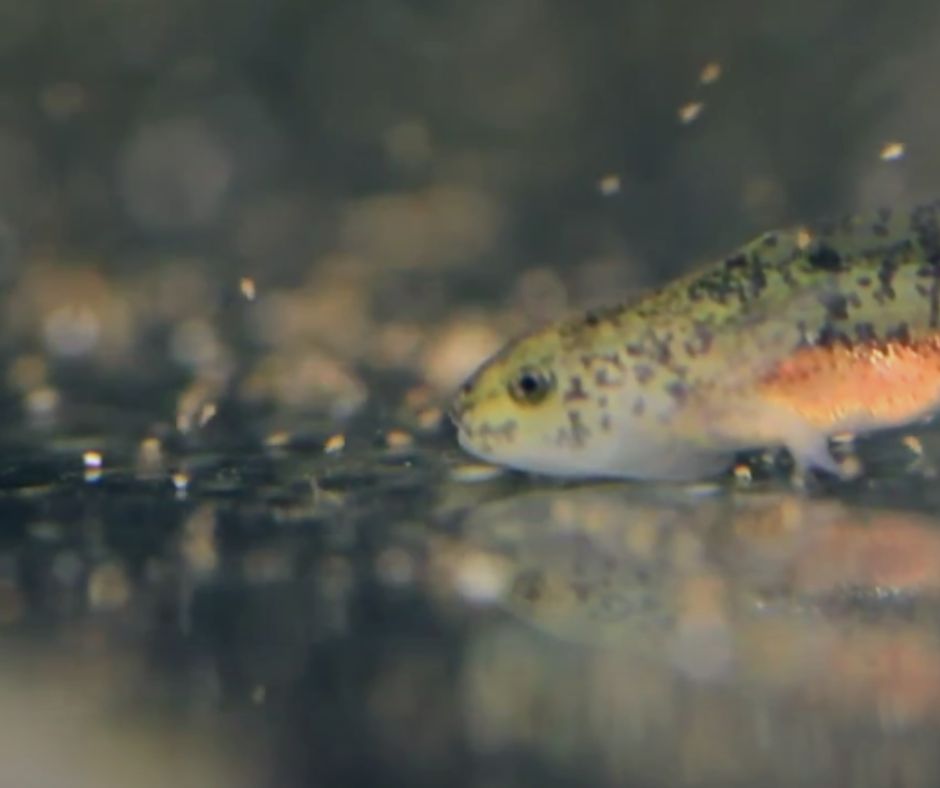
When you get your eggs put them inside the hatching tanks; ensure the room temperature ranges from 200 -220 Celsius since lower temperatures result in a more extended period of hatching the eggs.
The baby brine shrimp hatch in about 48 hours.
After hatching, you can drop them directly into the tank with a net rack and then use a turkey baster to spread the eggs in the tank.
After your axolotl has eaten, the wastes materials will settle at the bottom of the tank, after which you will change the water in the tank.
Step 3: Removing Baby Brine Shrimp as a Food Source
The next stage is removing the baby brine shrimp as a food source. BBS is ideal for growing baby axolotl; however, the sooner you can find them on the food that doesn’t mess the water fast, the better.
You should feed baby axolotl daily. The proper way to feed them is by forceps, where you hold their food and slowly drop it into the water.
The newly hatched brine shrimp have a very short lifespan; as a result, baby axolotl should consume the eggs less than 72 hours after hatching.
Note that anything your baby axolotl doesn’t snatch up and eat right away will die. Brine shrimp quickly contaminates the water, so you need to change the water often.
San Francisco Bay Brand Brine Shrimp Eggs 0.2-Ounces
- All-natural nutrient-rich food for baby fish/fry, small fish, reef aquariums, and others
- Easy to hatch
- Highly nutritious energy-dense food, best used within 2 hours from the hatch
- Proven to trigger a positive feeding response in picky eaters
- 85% hatch rate, when hatched at 85° F with aeration
Last update on 2022-12-29 / Affiliate links / Images from Amazon Product Advertising API
Feeding Adult Axolotls Brine Shrimp
Frozen brine shrimp is another good alternative food source for adult axolotls; they are pretty straightforward.
Live brine shrimp are a bit messy when it comes to feeding them. So, how do you feed adult axolotls brine shrimp?
Ideally, use a plastic plate or cup with higher “walls” to avoid the food from moving around too much. Where the ideal method is the “Serve on a plate” method. The stepwise procedures are as follows;
- Grab a bunch of brine shrimp and put them inside a cup with clean water. Then stir using turkey baster till it mixes very well.
- Slowly lower the cup down with brine shrimp into the water or use the turkey baster to transfer food to the axolotl dish.
- Hold on for a while as you wait for axolotls to move inside the cup to seize their food. Ensure that the plate has a large/wide circumference enough for your axolotl to swim in and out.
- Discard the cup and use a turkey baster to suck any remaining food floating around in the tank.
Although the method is not 100% clean proof since your axolotl can still swim around the plate, making the food fly around, it keeps the mess to the minimum level possible.
Also read: Axolotl Feeding Dish
What Should You Feed an Axolotl?
You are puzzling about what to feed your axolotl? Well, what to feed your axolotl will depend on their size and maturity since each stage has specific requirements.
For instance, adult axolotls have a strong sense of smell, while baby axolotls have their sense of smell developed just yet, and they are likely to be caught.
Axolotls are great at spotting movement and thus identify live food that wiggles. They can eat both living and nonliving food while baby axolotls eat live food that fits into their mouths.
Alternatively, other good food options available for axolotls are daphnia, freshly hatched baby brine shrimp, micro worms, chopped black worms, blood worms, and even tubifex.
Also read: What Can Axolotl Eat?
Clscea Aquarium DIY Brine Shrimp Incubator Hatchery Kit Simple
- Simple to use, you only need to prepare shrimp eggs, sea salt, a 1.5L mineral water bottle and an air pump.
- Connect with an air pump, eggs require 24 hours to hatch. After hatching, shrimp can keep fresh for 48 hours in 4-7℃/39-45℉ environment.
- The kit needs to be hung on the tank wall and is compatible with 3-10mm/0.12-0.39in thickness of the tank wall. Not compatible with rimmed and curved fish tanks.
- Easy to assemble and easy to clean after use.
- Enjoy DIY!
Last update on 2022-12-29 / Affiliate links / Images from Amazon Product Advertising API
Conclusion
Brine shrimp is a well-liked food type for an axolotl. Axolotls will feed on raw, live, or frozen brine shrimps, and they are fond of them.
Brine shrimp are very nutritious and flavored; for instance, it is rich in proteins, lipids, vitamins, and fatty acids, making your axolotl strong, healthy, and live longer.
The baby axolotls will quickly gobble up baby brine shrimp because of their small size. Adult axolotls eat both frozen and live brine shrimps.
